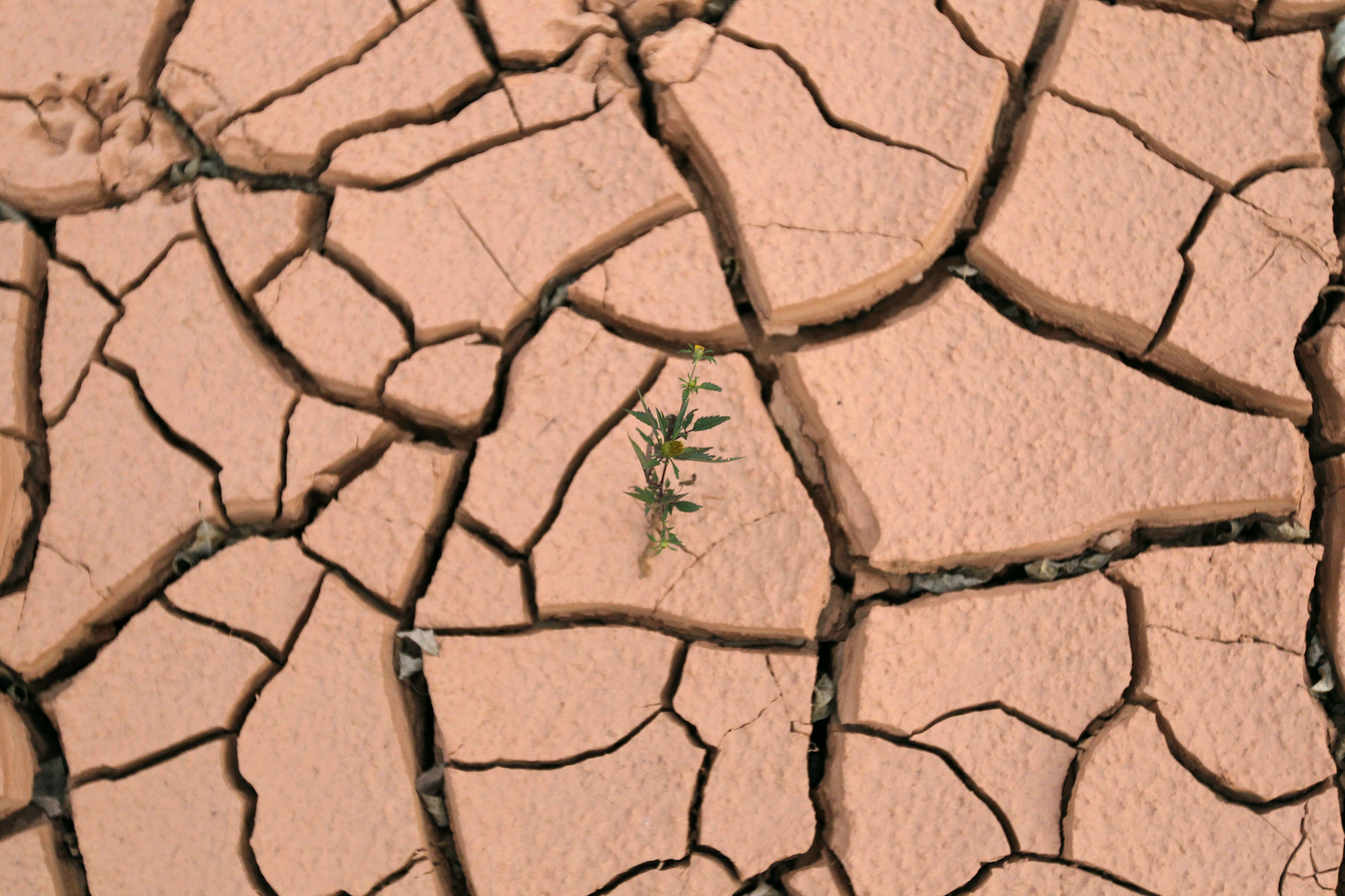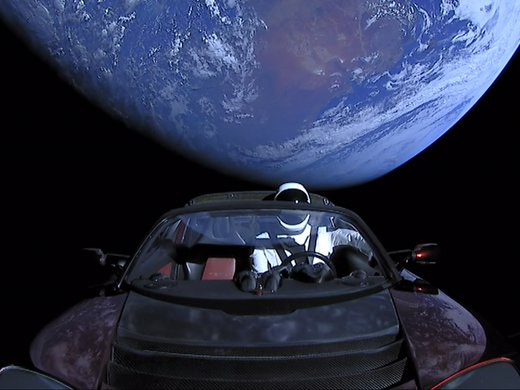The deepening of the Israel-Hamas war in late October overshadowed profound new findings from the International Energy Agency (IEA). “The transition to clean energy is happening worldwide and it’s unstoppable,” said IEA executive director Fatih Birol, as the agency released its latest annual World Energy Outlook report. The report details how the rapid rollout of green technology now under way will transform a major portion of the global energy system by 2030.
Even the most ardent environmentalists until recently might have considered that unrealistic. And yet an accelerated renewable energy transition — an unmistakable good — will produce new political and economic fault lines as demand for critical minerals skyrockets. In a fragmenting world trying to stave off climate catastrophe, the fight over these prized commodities promises to be equal parts necessary and destabilizing.
Manufacturing a single electric car, for example, requires more than 200 kilograms of combined copper, lithium, nickel, manganese, cobalt, graphite, zinc and rare earth elements, compared to less than 35 kilograms of just copper and manganese for an internal combustion model. The IEA forecasts that meeting the Paris climate agreement’s goal of keeping average global warming well below 2ºC above pre-industrial temperatures will result in a quadrupling of demand for critical minerals by 2040. Achieving net-zero emissions by 2050 would mean a sixfold increase.
But while not geologically scarce, these materials are already in short supply. This stems from their versatility as integral components of nearly all modern technologies — not only within clean tech, but also in consumer electronics, communications and medical equipment, advanced weapons systems and the supercomputers needed to develop artificial intelligence (AI). Some large deposits of critical minerals are also hard to access, given their location in increasingly fragile states.
Going forward, corporations’ profit seeking will be buoyed by insatiable market demand — a dynamic interlinked with the growing energy and national security concerns of geopolitical rivals. This constitutes a volatile mix. Safeguards must be created to ensure human rights don’t become collateral damage in the process.
The China Dilemma
Through its role as the world’s factory over the past quarter-century, China has come to dominate critical mineral supply chains. The country is by far the leading primary source or value-added refiner of cobalt, copper, graphite, lithium, neodymium, nickel and more. Likewise for rare earth elements — a group of 17 metallic substances needed in trace amounts for production of numerous dual-use technologies. Such a stranglehold over key inputs for decarbonization, military supremacy and the industries of tomorrow gifts Beijing significant political leverage. China’s unrivalled capacity to mass-manufacture solar panels and lithium-ion batteries will also enrich its coffers as the green transition gains pace.
This has serious foreign policy implications. Given China’s growing diplomatic clout, appeals to dismantle Western hegemony, and expertise at wielding state-owned enterprises to finance and execute infrastructure projects, the green transition could reinforce the country’s status as the preferred development partner in much of the Global South. If so, renewable energy projects will become another tool for Beijing to reshape international systems in favour of authoritarianism. They will also supply a benevolent narrative for the Chinese Communist Party’s (CCP’s) propaganda machine to drown out criticism at home and abroad.
Western countries have belatedly grasped how reliant they are on China for critical minerals fundamental to their security and prosperity. In the wake of the pandemic-era supply chain disruptions and energy insecurity sparked by Russia’s invasion of Ukraine, critical minerals — especially in processed form — represent another vulnerable chokepoint for liberal democracies.
Despite fevered rhetoric from nationalist hawks, the global economy’s interdependencies preclude a hard decoupling between China and the West. US Treasury Secretary Janet Yellen has called it “virtually impossible.” France’s finance minister has dismissed it as “an illusion.” The vice-president of the Beijing-based Center for China and Globalization, Victor Gao, echoed this sentiment in September in an op-ed for China’s state-owned Global Times, which mostly channels the foreign policy views of the ruling CCP. “Decoupling between China and the US is similar to any attempt to decouple the earth and the moon,” Gao wrote. Trying to disentangle the world’s two largest economies, he cautioned, would invite “disaster both for China and the US, as well as for the rest of the world.”
Still, the theory is that China could throttle Western access to these materials in the event of a spiralling trade war with the United States or military confrontation over Taiwan. For evidence, many observers point to 2010, when China reportedly blocked rare earth exports to Japan for two months after the captain of a Chinese fishing vessel was detained by Japanese officials following an incident at sea.
A new study from the London-based Centre for Economic Policy Research casts doubt on this version of events, calling it “folklore.” Nevertheless, the People’s Daily — a CCP mouthpiece — warned in 2019 that China could sever rare earth supplies to American companies in response to Chinese telecom giant Huawei being blacklisted by the Trump administration. “Waging a trade war against China, the United States risks losing the supply of materials that are vital to sustaining its technological strength,” an editorial said. The United States imports nearly three-quarters of its rare earth supply from China.
Beijing’s decision to ban foreign direct investment in rare earth mining projects as of January 1, 2022, has injected even more urgency into efforts by the West to diversify critical mineral supply chains. China’s Ministry of Commerce then imposed further restrictions in early August, this time on exports of gallium — of which the country produces 98 percent of the world’s raw supply — and germanium, two metals vital for making computer chips.
Critical minerals are abundant throughout the Western world, particularly in Australia, Canada and the United States. The problem is that mining projects have long lead times and are notoriously difficult to execute because of capital requirements, regulatory burdens, environmental protections and bureaucratic inertia. In Canada, which possesses enormous mineral wealth, the federal government’s new Critical Minerals Strategy admits it can take five to 25 years for a mining project to become operational and generate revenue. Some don’t even materialize after years of effort and investment. Mineral refinement poses a further challenge, given the energy intensity and toxic by-products inherent in the process.
What’s more, mining domestic deposits alone may be insufficient for Western countries to meet their needs. Filling the gap created by a serious pivot away from China will require governments and businesses from the industrialized world to engage their counterparts in emerging markets. And many of these nations are now embracing resource nationalism in an effort to dictate terms of trade to foreign clients.
Earlier this year, the government in Chile, home to the world’s largest reserves of lithium, announced plans to nationalize the industry. In Indonesia — on pace to become the world’s seventh-largest economy by 2030 — the government banned exports of nickel ore in 2020. Two years earlier, Jakarta appropriated gold and copper mines from a leading American metals company. Zimbabwe has prohibited the export of raw lithium since December 2022. The ruling Zimbabwe African National Union–Patriotic Front hopes that drawing value-added manufacturing projects can jump-start growth in a moribund economy that has cratered under the weight of Western sanctions and chronic hyperinflation.
But supply chain manoeuvres being drawn up in political capitals and corporate boardrooms tell only one part of the critical minerals story. The other part is unfolding in the communities where the precious assets are pulled out of the ground.
The critical minerals gold rush presents a once-in-a-generation opportunity for African governments to properly capitalize on their natural resources for the benefit of their people.
Putting Profits Over People Creates Risks
Tens of trillions of dollars in green energy supply and infrastructure investment will be required over the next few decades just to mitigate climate change. Overlapping demand for critical minerals for the foreseeable future will also come from the renewed global arms race and the AI revolution. If the history of oil is anything to go by, mineral-rich but institutionally weak nations await serious governance challenges that will come from a tidal wave of demand for their resources.
Nowhere else is this more apparent than in Africa. Absent a controversial ramp-up of deep-sea mining, the global green transition is doomed to fail without accessing the continent’s vast mineral stores. Calculations by the Washington-based Center for Strategic and International Studies estimate this includes 85 percent of the world’s manganese, 80 percent of its platinum and chromium, around half of global deposits of cobalt and a fifth of graphite.
The European Union, South Korea, the United States and others are already scrambling to sign infrastructure and mining agreements across Africa to compete with China’s entrenched presence there. Over the past two decades, China has issued at least $170 billion in debt across more than 1,200 loans to African governments and their state-owned enterprises. Mining has been the third-most targeted sector, behind transportation and energy. The head of the Zimbabwe Investment and Development Agency told a reporter that six months after the country instituted its ban on unprocessed lithium, his agency had received at least 160 lithium investment applications from investors based in China — in stark contrast to just five from the United States.
The critical minerals gold rush presents a once-in-a-generation opportunity for African governments to properly capitalize on their natural resources for the benefit of their people. However, the dangers of getting it wrong are immense — the most extreme example being the Democratic Republic of the Congo (DRC). For the past 20 years, political instability, opaque supply chains, foreign interference and endemic corruption have kept the nation of 102 million trapped in a brutal twenty-first-century version of the resource curse.
About the size of Western Europe, the DRC contains an estimated US$24 trillion in untapped mineral resources and produces around 70 percent of the world’s cobalt, along with large amounts of copper, coltan, tin, tungsten, tantalum and more. Much of this stock originates from the country’s restive eastern provinces — arguably the world’s most complex conflict zone. The territory, barely governed, is a chaotic battleground between government and regional forces, international peacekeepers and some 120 different armed groups residing there. Criminal enterprises, corrupt local officials, erstwhile revolutionaries, ethnic militias and roaming jihadist affiliates of the Islamic State each vie for a greater share of a booming illicit trade in gold, diamonds, lumber and critical minerals. Domestic authorities have been accused of overlooking child labour; artisanal miners operating on the fringes of large corporate mining sites have suffered abusive crackdowns. Overall, the consequences for the local population have been devastating, including the inability to fully take part in elections due to the lack of secure polling sites.
DRC President Félix Tshisekedi’s administration has made some headway renegotiating unfair mining contracts, particularly those with China, since he came to power in 2019. Yet most proceeds from the DRC’s mineral wealth are still concentrated in the hands of domestic political elites and foreign interests. Experts have alleged in various reports to the United Nations Security Council that Burundi, Rwanda and Uganda have each profited off the insecurity of their larger neighbour by offering weapons, money, training, intelligence and logistical support at various points to rebel groups in the DRC in exchange for natural resources being smuggled across their borders and laundered into global supply chains.
Washington’s charm offensive toward Kinshasa as of late is, in part, a clear attempt to chip away at Beijing’s influence in Africa. But this is not without risk. Recent coups in Mali and Niger have seen military generals grab power on the back of popular support driven by perceptions that the presence of Western interests in their country, especially those of France, constitute a form of neo-colonialism.
Similar types of anti-government mobilization could be repeated in places such as the so-called Lithium Triangle. Foreign companies from all over the world, including North American automakers, are flocking to the shared border region between Argentina, Bolivia and Chile, hoping their largesse will secure the raw materials that underpin their business models. But cost-of-living crises and a widespread backlash against graft and inequality are already roiling much of Latin America. Populism is ascendant at the same time that raucous demonstrations are being met with lethal responses by state security forces. Meanwhile, water privatization initiatives are already fuelling political instability in Bolivia, as well as in Ecuador and Peru, both of which are well-endowed with copper and other mineral commodities. A Canadian mining company operating a huge open-pit copper mine in western Panama that generates three percent of the country’s GDP was forced to consider suspending operations in late November due to protesters blockading its main energy source and the port the mine relies on to receive its supplies.
One dark possibility is that, in the face of civil-society defiance over public land and water being ring-fenced for lucrative but inequitable mining projects, embattled authorities enlist non-state actors to secure those locations in exchange for a share of output. Indeed, Latin America is already by far the deadliest place for environmental activists. It accounted for 88 percent of the 177 “environmental defenders” killed worldwide in 2022 alone, according to a report by human rights watchdog Global Witness. Meanwhile, powerful Brazilian and Mexican drug cartels that function as quasi-states are already diversifying into illegal mining and agricultural operations. Elsewhere, the Russian mercenary outfit Wagner Group, its networks now under Kremlin control, pioneered a sophisticated resource-for-protection model that has propped up brittle autocracies in Africa and the Middle East.
Western nations are not immune to institutional challenges around critical minerals either. These may rarely, if ever, result in bloodshed. But they still fray the business and legislative certainty prioritized by multinational companies and foreign investors when choosing where to place their operations and money.
Portugal’s Prime Minister António Costa, elected to lead Europe’s largest lithium producer with a majority just last year, abruptly resigned on November 7 after being investigated as part of an anti-corruption probe relating to concessions given to mining and energy companies. Costa has denied any involvement, but his chief of staff has been arrested, and his infrastructure minister indicted, over the ordeal.
Canada’s federal police in 2017 set up a new unit in British Columbia with a mandate that includes handling “energy industry incidents and related public order.” An official within British Columbia’s branch of the Royal Canadian Mounted Police (RCMP) reportedly invoked as rationale the anti-pipeline protests a year earlier in Standing Rock, North Dakota, that devolved into violence, leaving hundreds injured. However, critics argue that the Community-Industry Response Group, as the RCMP unit is called, serves as a de facto private security force for the energy industry.
A future Canadian hotspot could be Ontario’s Ring of Fire, a stretch of 5,000 square kilometres of land the province’s government says has “long-term potential” to develop chromite, cobalt, nickel, copper and platinum. Each of these is used in the manufacturing of electric vehicle batteries — a priority for Ontario, the heartland of Canada’s auto industry, as well as Ottawa. Together, governments at both levels have committed tens of billions of taxpayer dollars to attract battery makers to the province.
Ontario’s government has pledged to work with the nine different First Nations that live in the Ring of Fire area through bilateral agreements to conduct environmental assessments and co-develop projects with communities desperate for job creation, investment and infrastructure. However, Indigenous groups themselves remain seriously divided over mining expansion. Five First Nations have staged rallies in downtown Toronto in recent months, calling for projects to be shut down while also demanding in-person meetings with Ontario’s Premier Doug Ford. But the province’s top politician has staked part of his political legacy on the projects. In March 2018, he tweeted, “If I have to hop on a bulldozer myself, we’re going to start building roads to the Ring of Fire.”
Oversight and Innovation Can Unlock Better Outcomes
The main principles for addressing critical mineral supply chain issues aren’t new. But they do require a high degree of political will, multilateral cooperation and independent oversight — something hard to sustain in the long term.
The Organisation for Economic Co-operation and Development already has extensive guidelines for responsible sourcing of minerals from conflict zones and high-risk areas. The Energy Transitions Commission, a high-profile industry coalition, published its own report in July advising how to sustainably increase production. The document highlights the need to reduce the indirect deforestation and biodiversity impacts that mining projects have in tropical regions, which can undermine subsistence livelihoods. Social impacts that mining projects have on local communities must also be firmly addressed — especially human rights concerns, labour standards and tax avoidance. Central to this is improving conditions for artisanal miners operating in the informal economy. Mineral-rich countries must also stand firm and demand better contracts rather than simply acquiesce to those on offer.
A statement in May by the Group of Seven leaders vowed to enhance the resiliency of the global economic system by working with allies and partners to emphasize local value creation in international supply chains. This cannot be a hollow pledge. Under-resourced governments in developing countries need much more support from their industrialized counterparts as well, to enforce policies that discourage corruption. The United Nations Conference on Trade and Development has suggested that around US$89 billion in illicit financial flows leave Africa every year, typically facilitated by networks and professionals based in Western financial hubs. This, in essence, renders the least developed continent a net creditor to the rest of the world.
Continued innovation will also play a role. Last year, researchers at the University of Cambridge discovered a potential substitute for rare earths in the making of magnets used in wind turbines and electric vehicles. And then there is the fast-evolving field of deep-sea mining.
Rock-like objects plentiful at the bottom of the sea have been found to contain dense concentrations of critical minerals. A single area within the Pacific Ocean between Mexico and Hawaii, known as the Clarion-Clipperton Zone, is thought to hold several times as much cobalt and nickel as all the land-based reserves on Earth combined. Industry proponents say mining the ocean’s floor is the only way to meet the demand for critical minerals in time to meet global climate targets. But critics, including 21 countries, are calling for a moratorium on the practice until its effects on deep-water ecosystems are better understood. After two years of deliberation, the body tasked by the United Nations to regulate mining in international waters missed a July 2023 deadline to revise its standards to account for advances in deep-sea mining, frustrating parties on all sides.
It's difficult to overstate the financial, climate, technological and geopolitical importance of critical mineral supplies. The fierce competition for these building blocks of our high-tech future is just beginning and is bound to unfold in ways both good and bad, predictable and surprising. Late last year, the Pentagon’s deputy assistant secretary for industrial base resilience, Halimah Najieb-Locke, described the stakes to Politico: “You don’t know how much everything is interconnected until you lose access to one piece of the puzzle.” Most governments and businesses will do everything in their power to avoid finding this out.



